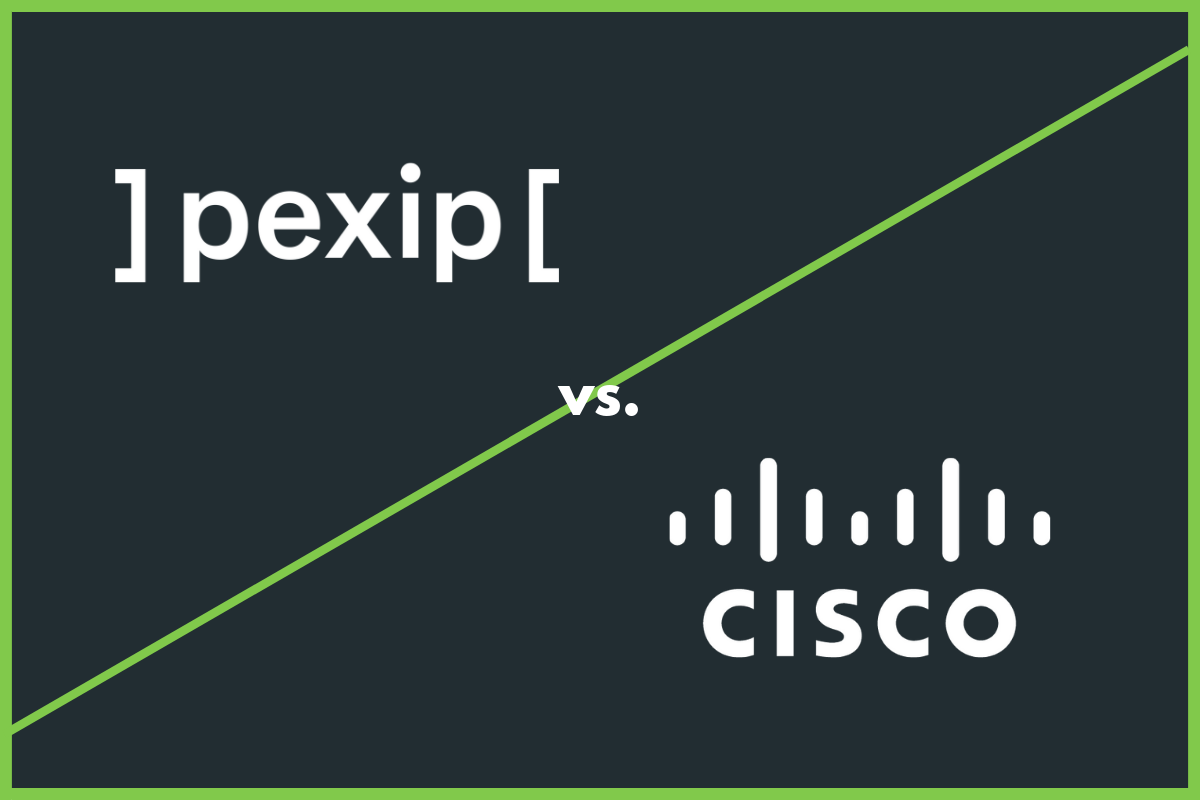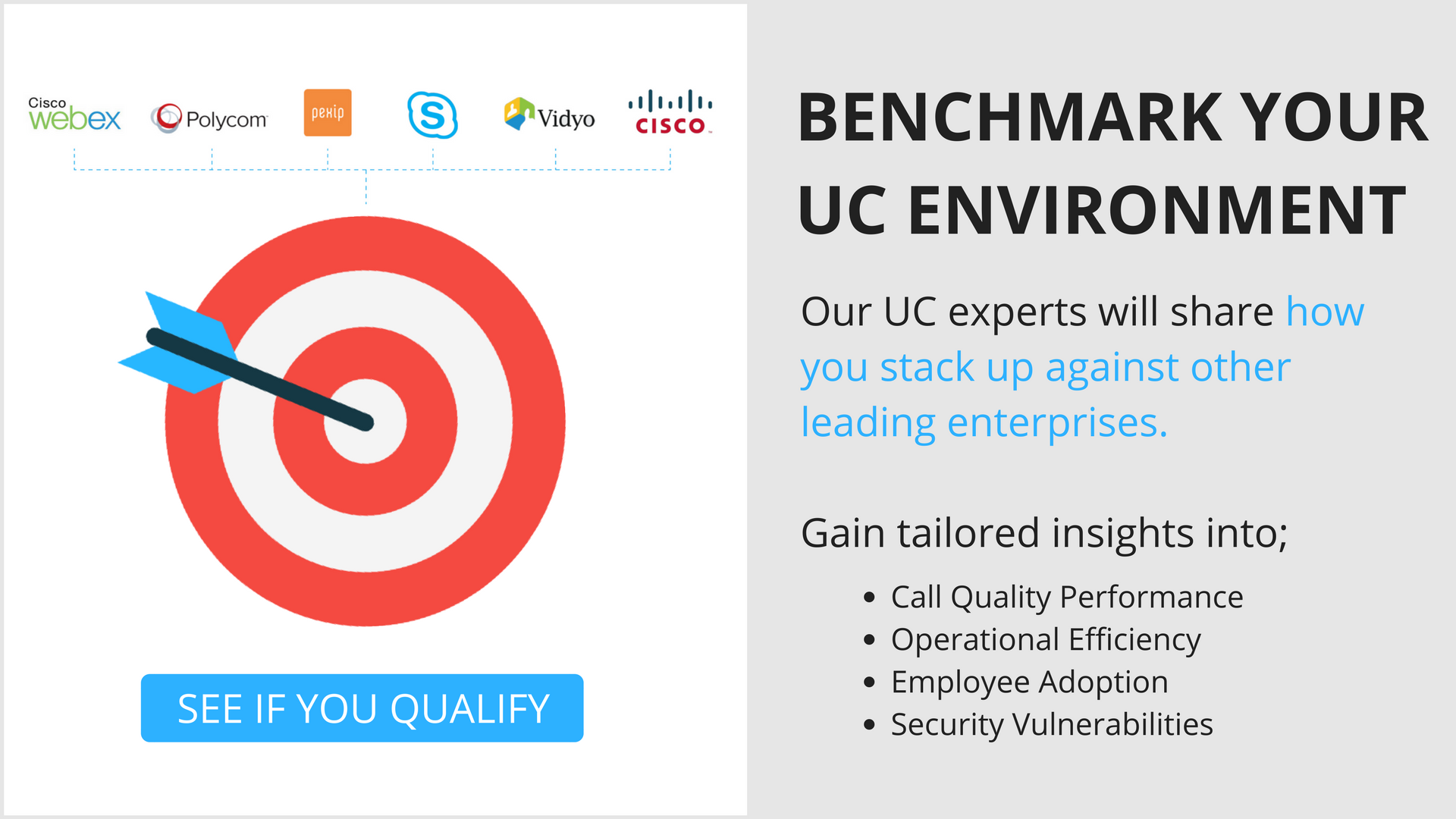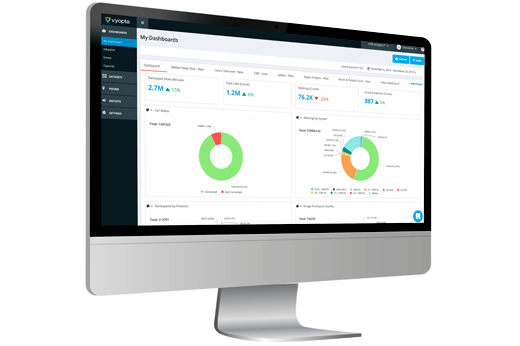This week we’re putting Pexip into the unified collaboration (UC) ring with industry Goliath, Cisco. Don’t scoff! It may not seem like an even fight at first, but Pexip’s flexible pricing model and recent technology innovations are giving them a competitive edge in the market. Also, knowing that on average only 30% of enterprise employees leverage collaboration means there’s a huge gap that needs to be filled, and Pexip could be the quick fix.
It’s a well-known fact the ultimate challenge for IT teams in the collaboration space is to operate efficiently while at scale. In order to do this, collaboration vendors need to be able to accomplish the following simultaneously with their solutions;
- Interoperability: End-users should be able to join a meeting at any time, from anywhere, using any device. There’s no better way to reduce friction then selecting a collaboration tool that does not force users through a series of cumbersome steps or piece of equipment. The easier it is to use, the more people will leverage a solution. Period.
- Cost and Efficiency: If it’s not affordable at scale, then it’s not a viable collaboration solution. To be clear, “scale” is not achieved when IT teams need to deploy batches of licenses, hand-hold end-users through the onboarding process, hold long and tedious training sessions, etc.. In short, collaboration tool should be easy to use from the word “go,” and that even includes determining how much to purchase.
- Manageability and Supportability: The deployment of any collaboration solution needs to be fast and easy. Whether an IT team is rolling out a collaboration solution to 1,000 local employees or 10,000 across the globe, it shouldn’t be a struggle. Often times teams can feel like they need additional staff just to handle the workload of adding, changing, or supporting collaboration solutions. This should never be the case.
Obviously each of these, three points loops back to the idea that collaboration should be easy for everyone involved. Pexip seems to knock it out of the park on all fronts, and many enterprises are not fully satisfied with their current collaboration solutions (since only 30% of employees are using them). Yet, most organizations are unsure lack the data needed to build a solid case for upper management to add or change technologies. So, IT teams are stuck and continue doing what they have always done despite knowing they are wasting resources and budget.
Not to worry, Vyopta can take care of that part. We’ll benchmark your UC environment and provide a comprehensive report you can turn over to your boss.
Unified Collaboration Before Pexip
The market when Pexip comes on the scene is characterized by a lack of visibility and rigid licensing/pricing structures for video conferencing users. In the past, video conferencing usage and adoption data had to be collected manually or with inefficient tools leading to critical data gaps. Enterprise IT teams were unable to understand how much video was being used without performing time-consuming spreadsheet analysis. Even then, the picture was incomplete.
Also, Virtual Meeting Rooms (VMRs) were not easy to scale up or down based on organizational needs. As video collaboration began to grow in popularity, additional licenses had to be purchased in bulk. At this time, licenses were priced and sold by the year. Since Enterprise IT professionals didn’t have insight into their company’s network capacity performance, they were forced to guess rather than work strategically to scale up or pull back licenses in response to seasonality.
Things were incredibly inefficient in the business communications world, but inefficiency often leads to opportunity. Someone just needed to step up to the plate and fill the void.
[bctt tweet=”Scalability in #videoconferencing means rethinking users & licenses to match the way people meet ” username=”vyopta”]
Pexip Enters the Unified Collaboration Arena
The founders of Pexip knew they should pursue a solution to solve the lack of scalability for enterprises with
Cisco was, and is still, the leader in the video conferencing and unified communications market. This is why we often refer to them as the “Goliath” of the video communication industry. They are the vendor or all vendors in the enterprise video collaboration story. Cisco was the vendor you went to for ports and licenses for video bridges and Multipoint Control Units (MCUs). However, Pexip is credited for coining the term “virtualized media platform” after realizing if a company wanted to expand their video network to a large, geographically distributed workforce, Cisco’s model wouldn’t scale.
This is the moment Pexip picked a fight with Cisco, the pack leader in unified collaborations.
Pexip Lands a Combo on Cisco
There are a few areas in which Pexip goes toe-to-toe with Cisco;
- Software-Based MCUs: Pexip launched a new virtualized collaboration bridge with flexible scalability for large enterprises. The Pexip Infinity product provides multiple users across a geographically dispersed organization with personal VMRs that include multi-protocol support (SIP, H.323, Microsoft-SIP, WebRTC, RTMP), desktop client support (Windows, OSX, Linux) and mobile support (iOS and Android).
- Flexible Skype for Business Integration: We’re all aware Cisco acquired Acano, but the rumor was that a primary driver of this acquisition was to gain Acano’s Microsoft Skype for Business integration. Interestingly, the promotion of Cisco’s new Skype integration is rather buried. Pexip seems to have the only easy-to-find, independent solution around. It’s also highly flexible, making Pexip appealing to a large portion of the enterprise market. Additionally, organizations with globally dispersed Skype for Business clients love that their servers are configured for each location and support dialing out from a conference to any Skype participant.
- Lower Bandwidth Costs for Video: Pexip’s distributed architecture means that users can reduce video bandwidth consumption by up to 90 percent. This means, rather than stacking Pexip VMRs in a single data center, Pexip conference nodes can be distributed as appropriate, so meetings can be dialed into using the closest available conference node. In short, their data needs less bandwidth for each meeting. Now, that’s just smart.
…and the Battle Isn’t Over
Although Pexip’s Infinity Connect solution has definitely cut into the market, Cisco has a much more scalable VMR offering since they have acquired Acano. Acano’s Cospace has similar scalable properties to Infinity and can be deployed on-premise, in the cloud or hybrid. Plus, Cisco Spark is looking like a promising cloud solution for the enterprise market, and they already dominate.
Want to know will come out on top so you can place your bets? Check out our latest ebook Enterprise Video Collaboration: David & Goliath Stories!








